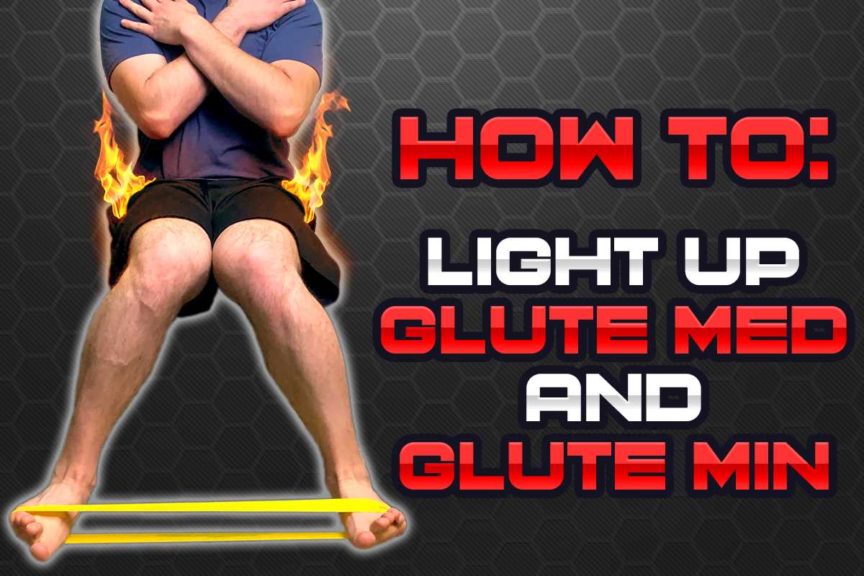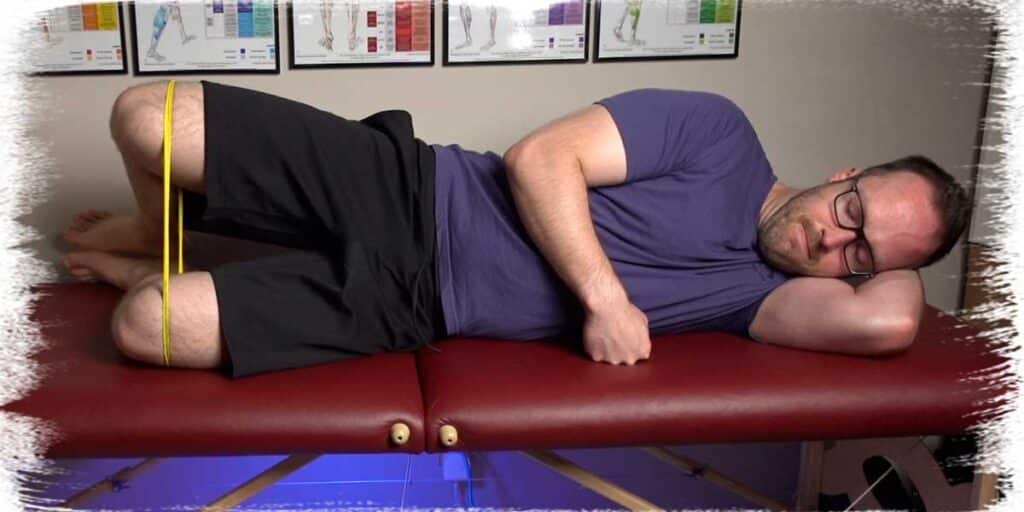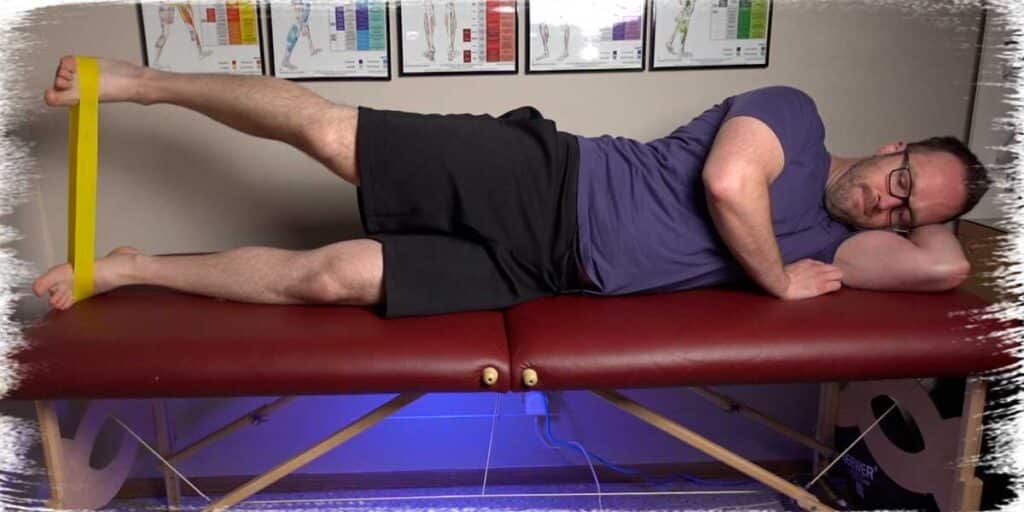This article will show you an exercise that seemingly no one else on the internet is talking about when it comes to finding the most effective movement for explicitly targeting and isolating the gluteus medius (glute med) and gluteus minimus (glute min) muscles of the hip. If your goal is to target either of these muscles with as little assistance as possible coming from other nearby muscles, then you can’t afford not to try this.
The absolute best way to target glute medius and minimus for isolated strengthening is to perform internal rotations while in a seated position with your hips and knee flexed to 90 degrees. Doing so will force these two muscles to produce the movement without assistance from any other muscles.
So, when it comes to isolating, strengthening and challenging these two critical hip muscles, what makes this movement more effective than traditional exercises like clamshells and other hip abduction-based movements? How exactly does one perform this exercise? Read on to find out!
ARTICLE OVERVIEW (QUICK LINKS)
Click/tap the following headlines to instantly jump to that section of the article.
- The role of glute med & glute min
- The issue with performing abductions for glute med & min
- How gluteus maximus assists with abduction
- Why seated internal rotation isolates glute med & min
- HOW TO: Performing the seated internal rotation exercise
- Bonus: The single-leg variation
And just so we’re clear, this isn’t something I learned in PT school, rather through the awesome mentorship that I’ve received through two hip specialists at the clinic where I work. Thank you, Dave and Geoff.
The role of glute med & glute min
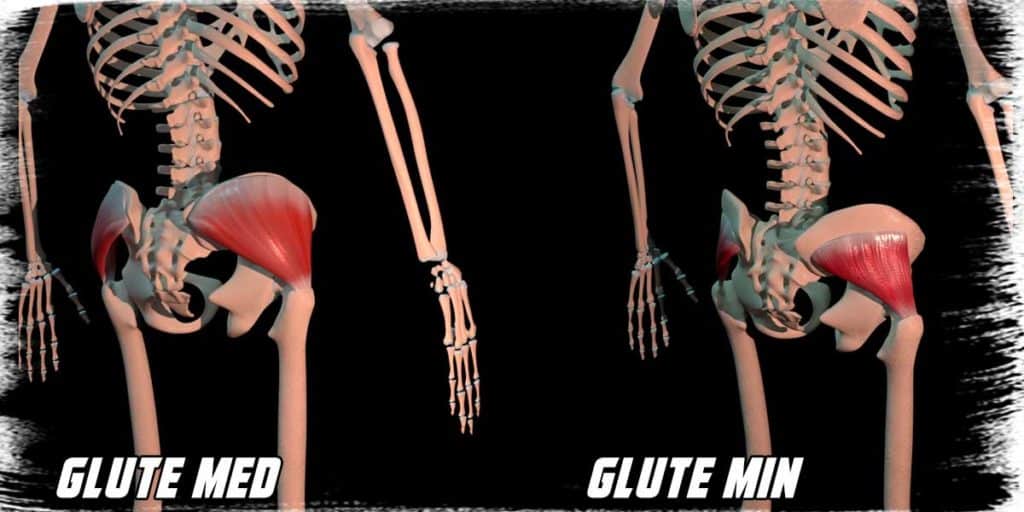
Both the gluteus medius and minimus are important muscles of the hip. They are responsible for producing specific leg movements while also helping to hold us upright when walking and standing. The result is essentially better stability around the hip joint and better efficiency or economy of movement with our daily and sporting-based activities.
A bit more specifically, when these muscles contract, they produce a few different movements of the hip. However, the key with all of this is the position that the hip is in when these muscles contract.
When standing upright (where the hip is in a straight or “neutral” position), these two muscles produce a movement known as abduction, which is the osteokinematic term for the hip moving out to the side, away from the body.
When in hip flexion (such as when seated in a chair), the glute med and min work to produce a movement called internal rotation (referring to the thigh bone rotating inwards towards the body’s midline). It seems that not many people on the internet are aware of this, as most therapeutic and rehabilitative glute med and min exercises that people are demonstrating are based solely around hip abduction.
The issue with performing abductions for glute med & min
Exercises involving abduction-based movement for strengthening the glute med and min are great exercises. I want to make that perfectly clear. This is especially true when performing more functionally-based exercises often required in various stages of hip rehabilitation. I have a number of these sorts of exercises that I prescribe to my patients in the clinic, along with my clients in the gym.
But, if the goal for the patient/client is more along the lines of isolating and directly targeting the glute med and min (often the goal with a portion of therapeutic rehabilitation), abduction-based movements may not have the ability to target these two muscles all that effectively. This is due to another muscle jumping in to help greatly assist with the movement.
That particular muscle that helps out is known as the gluteus maximus (glute max, for short). Yes, glute max has a role in abducting the hip and a powerful role at that.
Keep on reading to find out why this is!
How gluteus maximus assists with abduction
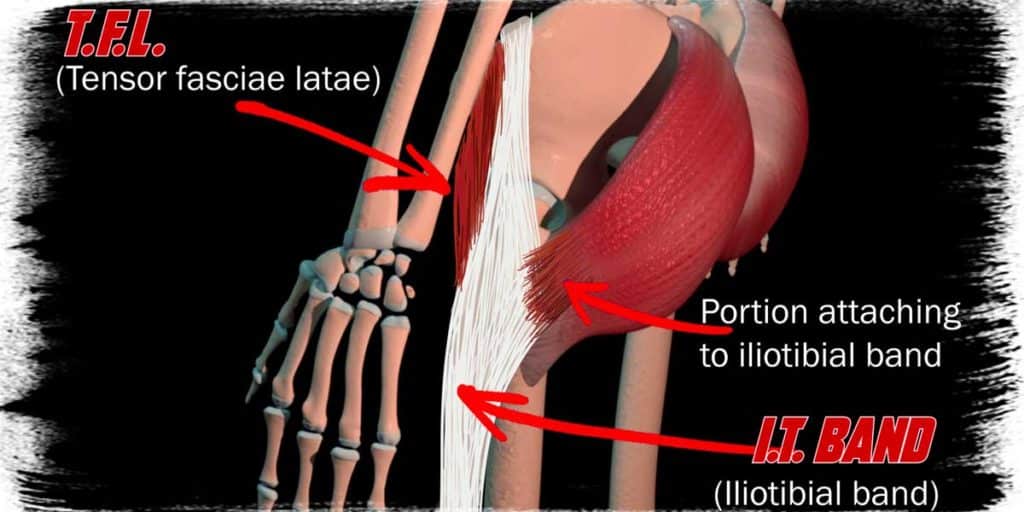
Glute max is like the popular jock in high school – everyone knows who he is along with how strong he is. But every person, no matter how popular they are, can be a bit misunderstood. And Mr. glute max is no exception to this.
Most people are familiar with the role of glute max in producing hip extension (straightening the hip). Some are also familiar with glute max’s ability to externally rotate (twist outward) the hip joint when in a standing or neutral-hip position.
But plenty of people aren’t aware of the role that glute max has with producing hip abduction; it is, in fact, a power abductor due to approximately half of the muscle attaching onto the posterior aspect of the IT band. This creates a powerful setup for producing hip abduction.
This isn’t to say that glute max is the only muscle producing hip abduction, rather that a significant portion of abduction-based movements are likely to be achieved through glute max. Glute med and min will still also contract, but if the goal is to isolate the med and min, finding a position and subsequent exercise that can take glute max out of the equation will likely yield far better results.
Why seated internal rotation isolates glute med & min
The reason why seated internal rotation is so effective at specifically targeting and isolating the glute med and min is due to the positional difference between a neutral hip (think of the hip’s position when standing) and a flexed hip (think of when sitting in a chair).
By flexing the hip to 90 degrees, the gluteus maximus is not only stretched out and somewhat inhibited, but the orientation of its muscle fibres are now in a direction that cannot assist with producing internal rotation. If one were to use an analogy, glute max has now become a square peg that can’t fit through a round hole.
Contrast this with the glute med and min, which have not changed their fibre orientation between a standing and sitting position. The result is that glute med and min fibres are still aligned in a way that allows them to essentially be the only muscles that can pull on the femur (thigh bone) to produce internal rotation. In other words, these two muscles are the only round pegs that can now fit through the round hole.
The result? Sweet, sweet isolation of the glute med and min, providing a great way to achieve targeted isolation for prophylactic and rehabilitative strengthening.
HOW TO: Performing the seated internal rotation exercise
The only thing better than how effective this exercise is, maybe perhaps how simple it is. Immensely effective AND immensely simple? Sign me up!
Here’s how to perform the exercise to get the most out of it:
Step 1: Find a chair or object to sit on that is high enough to keep your feet off the ground when seated.
Step 2: Place a small theraband or similar band around each foot. The exercise won’t be as challenging if you put it around your ankles. You can also opt to not use any external resistance. This is sometimes required for individuals with extremely weak or tendinotic muscles.

Step 3: Bring your knees as close together as possible. Have them touching and keep them touching throughout the movement, if at all possible. If you need a way to force yourself to do this, take any object (a piece of paper, a pen, etc.) and squeeze it between your knees without letting it fall to the floor throughout the duration of the exercise.
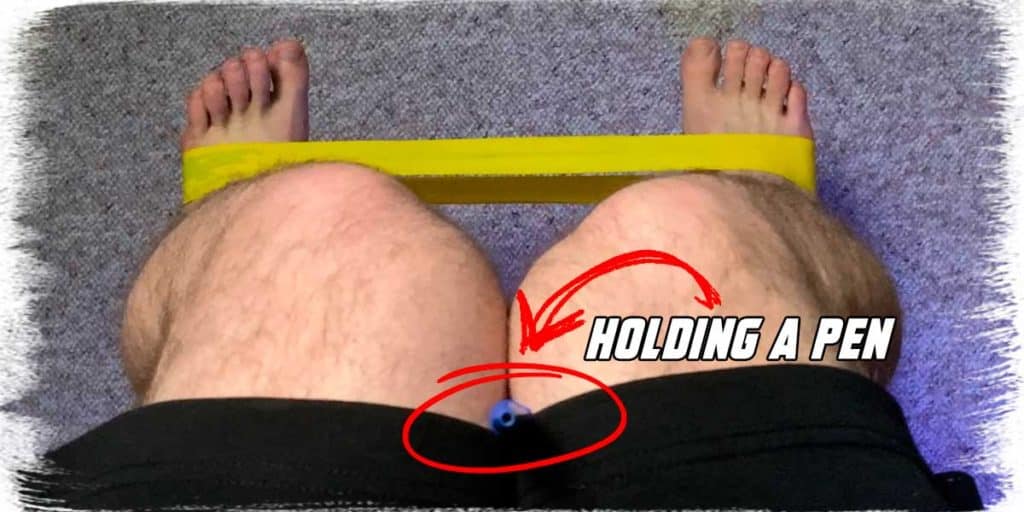
Step 4: Cross your arms over your shoulders or cradle them in a way that keeps your hands off of the surface that you’re sitting on. Keeping your arms off the table prevents any movement compensation that can likely otherwise reduce the challenge that the glute med and min are undergoing throughout the movement.
Step 5: Pull your feet as far apart as possible while keeping your knees together. Hold this end position for a second or two before slowly returning to the starting position. Repeat for as many repetitions and sets as you need or desire. I usually opt for around 10 – 15 repetitions and 3-4 sets for typical cases.

It’s as simple as that! You’ll know that you’re targeting these muscles with enough of a challenge if you feel a sense of effort around the general vicinity of the side hip pocket area as you perform the exercise.
Bonus: The single-leg variation
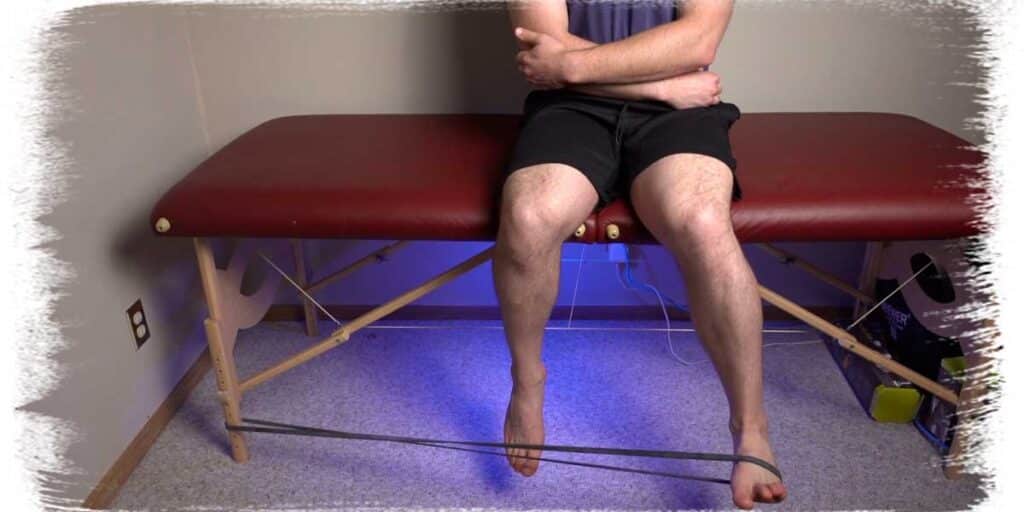
If you find yourself really needing to focus your efforts on a single hip, you can perform this exercise only using one leg at a time. It’s a simple variation that follows the exact same steps above.
The only difference is the band. Instead of looping a mini-band around both feet, simply tie a piece of theraband around a nearby object (or you can use a long exercise band, as I did in the photo above).
With the band around your foot, scoot away from the anchor point until you have adequate tension on the band. Then, perform the movement as described in the steps above with the double-leg version.
Final thoughts
The best approach to take when strengthening your hip muscles is, of course, one that best suits your own individual needs. There are a number of excellent glute med and min exercises when it comes to strengthening these particular muscles, plenty of which are abduction-based and highly functional.
But every now and then, the need arises for explicitly targeting and highly isolating the glute med and min muscles. When this is the case, opting for the seated, internal rotation exercise is likely the way to go.
So, give this exercise a shot and be prepared for these muscles to have to produce more work and effort than they’ve likely experienced with other strengthening exercises!

Hi! I’m Jim Wittstrom, PT, DPT, CSCS, Pn1.
I am a physical therapist who is passionate about all things pertaining to strength & conditioning, human movement, injury prevention and rehabilitation. I created StrengthResurgence.com in order to help others become stronger and healthier. I also love helping aspiring students and therapists fulfill their dreams of becoming successful in school and within their clinical PT practice. Thanks for checking out my site!

